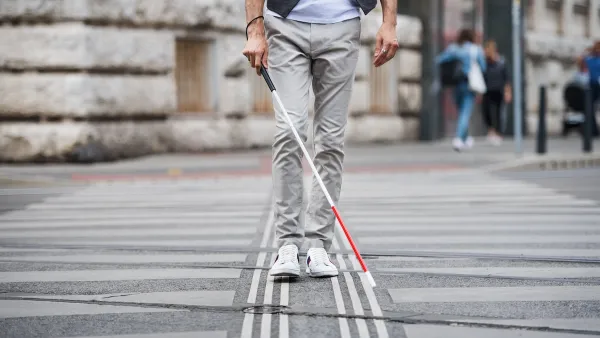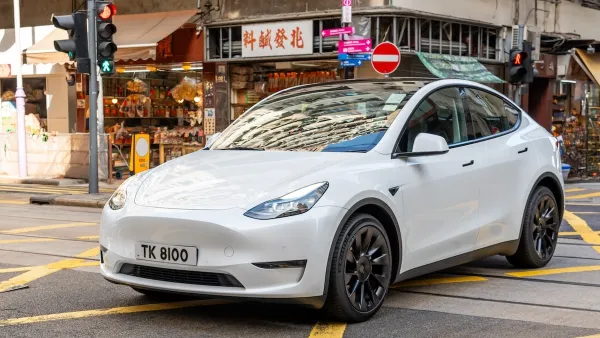As an act of resistance, artist James Bridle used salt to draw a set of lines on a road that would, in theory, hold an autonomous vehicle in place.

James Bridle's simple "trap" would do little to deter human drivers, but it could prove paralyzing to a computer designed to read markings on the road. The piece is meant to call attention to the very new considerations we'd face in a world of self-drivers.
Describing the trap, Beckett Mufson writes, "In the language of road markings, the dotted white lines on the outside say, 'Come On In,' but the solid white line on the inside says, 'Do Not Cross.' [...] If a self-driving car is designed to read the road, what happens when the language of the road is abused by those with nefarious intent?"
Bridle wants to question corporate narratives through his art, while at the same time avoiding a purely reactionary approach. Says Bridle, "I don't see why cab drivers of the future shouldn't be chalking white lines on side streets to derail self-driving Ubers which are putting them out of work, and I also think we need more eyes and hands on the tools which are shaping all of our futures."
FULL STORY: Meet the Artist Using Ritual Magic to Trap Self-Driving Cars

National Parks Layoffs Will Cause Communities to Lose Billions
Thousands of essential park workers were laid off this week, just before the busy spring break season.

Retro-silient?: America’s First “Eco-burb,” The Woodlands Turns 50
A master-planned community north of Houston offers lessons on green infrastructure and resilient design, but falls short of its founder’s lofty affordability and walkability goals.

Delivering for America Plan Will Downgrade Mail Service in at Least 49.5 Percent of Zip Codes
Republican and Democrat lawmakers criticize the plan for its disproportionate negative impact on rural communities.

Test News Post 1
This is a summary

Test News Headline 46
Test for the image on the front page.

Balancing Bombs and Butterflies: How the National Guard Protects a Rare Species
The National Guard at Fort Indiantown Gap uses GIS technology and land management strategies to balance military training with conservation efforts, ensuring the survival of the rare eastern regal fritillary butterfly.
Urban Design for Planners 1: Software Tools
This six-course series explores essential urban design concepts using open source software and equips planners with the tools they need to participate fully in the urban design process.
Planning for Universal Design
Learn the tools for implementing Universal Design in planning regulations.
EMC Planning Group, Inc.
Planetizen
Planetizen
Mpact (formerly Rail~Volution)
Great Falls Development Authority, Inc.
HUDs Office of Policy Development and Research
NYU Wagner Graduate School of Public Service





























